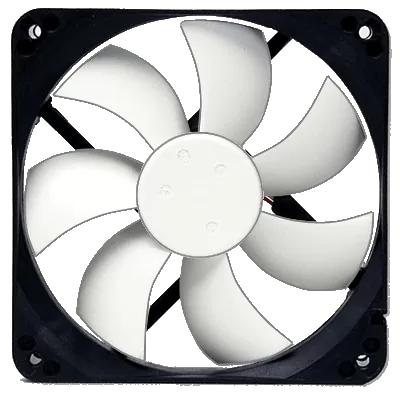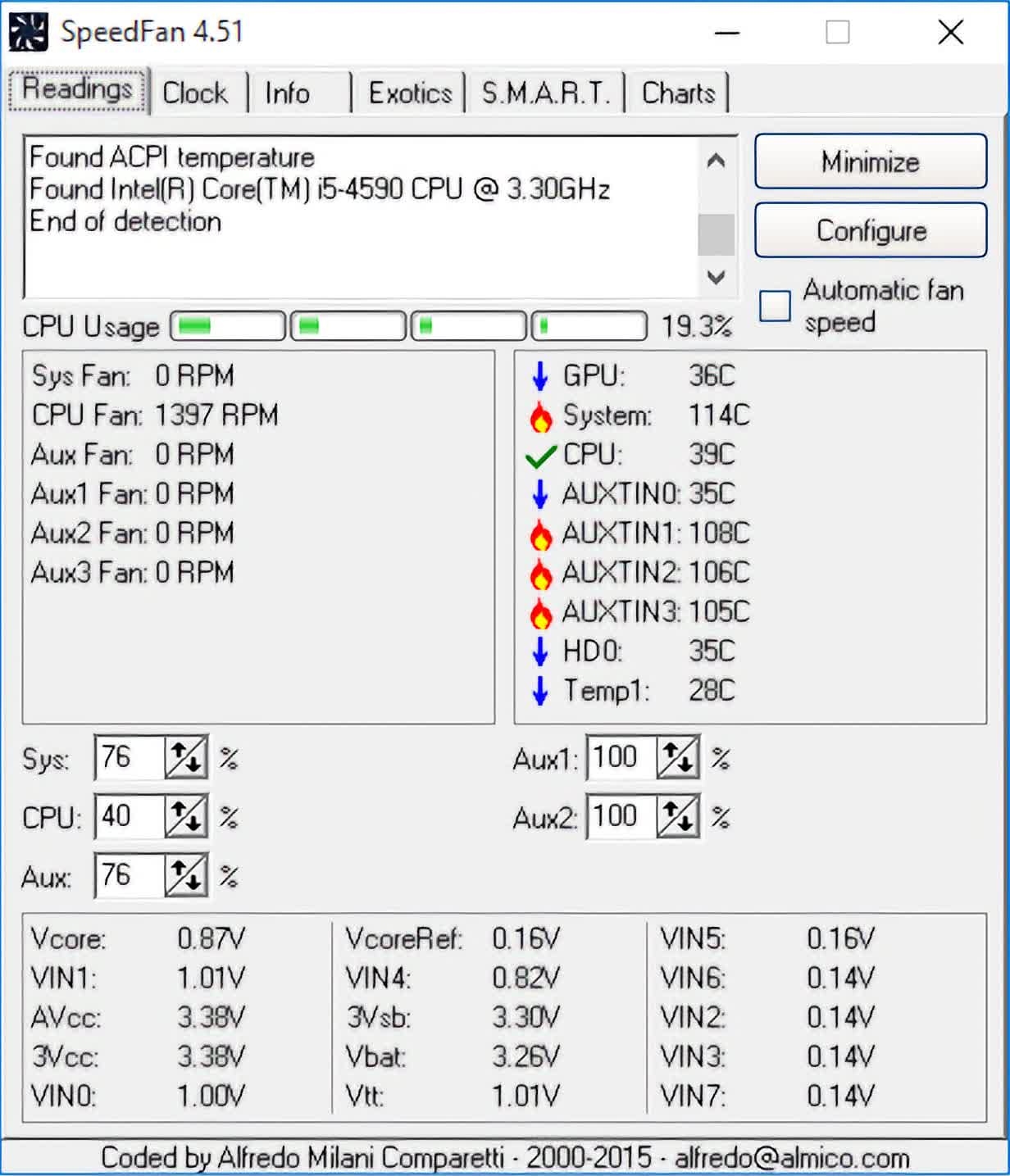SpeedFan is a hardware monitor software that can access temperature sensors, but its main feature is that it can control fan speeds – depending on the capabilities of your sensor chip and your hardware – according to the temperatures inside your PC, thus reducing noise and power consumption.
Can SpeedFan control the fan speed of any fan?
SpeedFan is able to control the fan speed of most fan makes and models, but this will ultimately depend on your motherboard's sensor chip and capabilities. Once installed, SpeedFan will automatically detect if your hardware is compatible and advanced features are presented.
Are there modern alternatives to SpeedFan?
Because SpeedFan is not actively developed, you can check out FanControl and Argus Monitor, both provide better compatibility with current hardware and more intuitive controls compared to SpeedFan.
What do the temperature readings like "Temp1," "Temp2," and "AUX" mean in SpeedFan?
These labels correspond to different temperature sensors on your motherboard:
- Temp1: Often the CPU temperature.
- Temp2: Could be the motherboard chipset or another component.
- AUX: Typically an auxiliary sensor; sometimes displays incorrect readings.
Why doesn't SpeedFan detect all my fans?
SpeedFan's ability to detect and control fans depends on your motherboard's compatibility and how the fans are connected. If you're using fan hubs, especially powered ones, SpeedFan might only recognize the fan connected to the primary slot.
What other features does SpeedFan offer besides controlling fan speed?
SpeedFan can also read S.M.A.R.T information from your hard drives, show CPU usage, chipset information, core temperatures, change clock speed, and analyze voltages.
What operating systems are compatible with SpeedFan?
SpeedFan works with Windows 9x, ME, NT, 2000, 2003, XP, Vista, Windows 7, 2008, Windows 8, Windows 10, Windows 11 and Windows Server 2012. Including 64-bit versions.
Features
SpeedFan monitor temperatures from several sources. By properly configuring SpeedFan, you can let it change fan speeds based on system temperatures. SpeedFan can change the FSB on some hardware (but this should be considered a bonus feature).
Several sensors, like Winbond's and the AS99127F support fan speed changing, as well as others from Maxim, Myson, Analog Devices, National Semiconductor and ITE, but the hardware manufacturer must have connected the relevant pins to some additional, yet trivial, circuitry. From one of the very first hardware monitor chips that could be found in standard PCs, the National Semiconductor LM75 (and all of its clones, like the Philips NE1617 and the Philips NE1618 or the Maxim MAX1617) or the Analog Devices ADM1021, such chips have been greatly improved, both in their precision and in their capabilities.
Current chips can monitor fan speeds, voltages and control fan speeds by using PWMs (Pulse Width Modulation). Some chips can even be programmed to vary fan speeds without any additional software intervention. If your BIOS was programmed to setup such chips this way you can still try to use SpeedFan's Advanced Configuration to revert to manual (software controlled) mode. Winbond W83697HF, Analog Devices ADT7463, SMSC EMC6D102, ITE IT8712F, National LM85C and Maxim MAX6650 are very good candidates. Some SuperIO chips include temperature sensors too.
SpeedFan can automatically detect them and use their features. The most used are National PC87366 and all of SMSC LPC SuperIO chips.
SpeedFan can find almost any hardware monitor chip connected to the 2-wire SMBus Serial Interface and to the ISA BUS.
SpeedFan can handle:
- Almost any number of South Bridges
- Almost any number of hardware monitor chips
- Almost any number of hard disks
- Almost any number of temperature readings
- Almost any number of voltage readings
- Almost any number of fan speed readings
- Almost any number of PWMs
What's New
- Added full IPMI support
- Added full support for IT IT8771E
- Added full support for Intel Sunrise Point (Z170) SMBus
- Added full support for STMicro STTS2004
- Added full support for NCT6793D
- Added full support for Giantec GT34TS04 and GT34TS02
- Added support for Atom E3800 SMBus
- Added support for Atom C2000 SMBus
- Added support for Fintek F71878A/F71868A at non standard addresses
- Enabled SMBus on Intel 6 Series / C20x, if needed
- Fixed SCSI_PASS_THROUGH access on some systems
- Skipped accessing those hard disks that return the ID Sector from another disk
- Fixed Nuvoton NCT6791D and NCT6792D sixth fan readings
- Added support for alternate registers of NCT6793D
- Fixed German translation for CPU Usage


